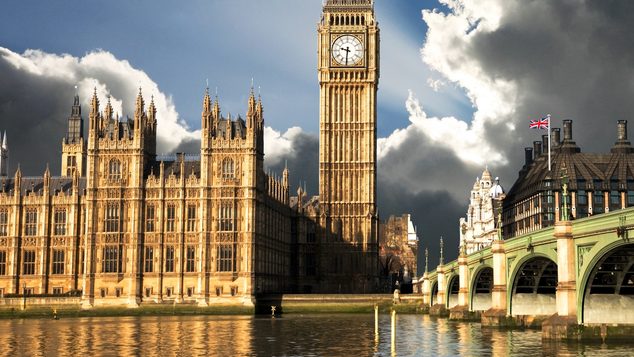Recently, the Chinese government signalled a policy shift towards stimulating short-term economic growth. The party leaders cited “maintaining steady and healthy economic growth” as their main priority for the period ahead, clearly suggesting quantitative easing.[1] Given the historical impact of China’s policy easing on the global economy, this has led many to question whether we are about to see worldwide economic reflation.
What’s the Backdrop to this Policy Change?
Over the course of the year so far, we have seen mounting evidence that the Chinese economy is slowing. Given that policymakers began paring back monetary and fiscal support in the second half of 2017, it was likely that the economy would slow. The abrupt cancelling of infrastructure projects that were already underway, such as the building of the underground system in Baotou, Inner Mongolia, caught the headlines in indicating this economic transition. The financial deleveraging campaign, aimed at reducing risk within the financial system, has also been central to the current slowdown. While ‘deleveraging’ is misleading given that the stock of debt in China has continued to grow, the rate of flow of net new credit into the system has decreased, and it’s this measure that has been critical in determining nominal growth and asset prices in China, particularly since the financial crisis.
The turning of credit booms to busts in the U.S. and Europe led to a dramatic slowdown in the growth of demand for Chinese exports. Rather abruptly, China needed a new source of nominal demand growth in order to avoid recession. To achieve this, Beijing engineered what is widely referred to as China’s economic ‘rebalancing’ – a shift from exports to domestic demand as the driver of growth. However, this so-called rebalancing has been dependent on a domestic expansion of credit, so in some sense not much has changed about Chinese growth, or for that matter global growth – it is still very much dependent on the continued accumulation of debt, only this time in China.
The financial deleveraging campaign entailed a concerted crackdown on China’s shadow banking channel, the rapid growth of which had become a cause for concern among policymakers. However, the shadow banking channel is where the financial chicanery which was used to engineer the balance sheet capacity needed to underpin the credit boom from late-2015 took place. The efforts to curtail shadow banking have cut credit growth, which, in turn, has led to a slowdown in nominal growth and reduced support for asset prices.
Bad Loans Are Back
One of the ways a deterioration in economic growth reveals itself is in the form of bad loans. As nominal growth slows (nominal cash flow matters when it comes to servicing nominal debts), aggregate income growth necessarily slows and indebted and/or uncompetitive companies are increasingly unable to service their debts. As a result, banks will see an increase in non-performing loans (NPLs). To this end, the latest commercial banks’ NPLs data suggests an ongoing slowdown. NPLs rose by RMB183bn in Q2, the biggest quarterly increase in over a decade. Bad loans now make up just under 2% of all loans according to official statistics – the highest ratio since the financial crisis. While the number still looks implausibly low given what else we know about the Chinese economy, the increase alongside a recent jump in corporate bond defaults suggests that slowing nominal growth is leading to strain on corporate balance sheets. What’s more, the NPL ratio would have risen by a wider margin if commercial banks hadn’t used the aforementioned financial chicanery to reclassify loans as ‘investments’, which, conveniently, are not considered when calculating NPLs. A look through at the underlying loans that constitute these investments indicates that true NPL ratios are much higher than the official 2% figure.
Effects of Easing
Intensifying credit stress, a deflating Chinese equity market, and recent weakness in industrial commodity prices suggest that the reflexive/self-reinforcing relationship between tighter financial conditions leading to slower credit growth, leading to weaker NGDP growth and weaker asset prices (which, in turn, exacerbates the tightening of financial conditions) is becoming entrenched.
It is perhaps no surprise then that recent weeks have seen a series of officials announcing easing measures, both on the fiscal and monetary front. Indeed, the recent new loans data came in at a lofty 85% YOY – a punchy rate of loan growth if ever there was one. This has prompted investors to question whether we are on the cusp of another China-led reflation of the global economy and financial markets. At this juncture, we think not, for two main reasons:
- First, while the measures announced thus far no doubt amount to an easing of policy, based on the information we have to hand it does not yet appear that the authorities are throwing the kitchen sink at the economy (as was the case in 2009 and from late-2015). Indeed, alongside the announced easing, the authorities have stated that this is a considered easing of policy more akin to tweaks to economic and financial management.
- Secondly, Beijing is increasingly constrained in its ability to use monetary policy to stimulate the economy. The shift to debt-fuelled domestic demand has inevitably seen imports grow at a faster rate than exports, leading to a deterioration in China’s current account position. Prior to the financial crisis, China’s current account surplus was more than 10% of GDP; in Q2 2018, it was 0.53%.
While not yet dependent on capital imports to sustain a current account deficit, the extent to which the Chinese authorities are able to maintain control over domestic financial conditions and economic outcomes has declined along with the current account surplus. In other words, the degree to which financial conditions in China are influenced by global financial conditions has increased. With the deterioration in the external position, China is increasingly at risk of being subject to Gresham’s Law, which determines that bad money is theorised to drive out good money. If the authorities are serious about reflating the Chinese economy, the People’s Bank of China (PBoC) must expand its balance sheet in order to provide liquidity to the commercial banking system, which in turn can then extend credit to the rest of the economy. But to do so effectively devalues the purchasing power of the existing stock of yuan.
Unsurprisingly, wealthy Chinese are not enamoured by the prospect of having the real value of their wealth eroded via inflation. If the PBoC were to begin aggressively expanding its balance sheet, it is highly likely we would see a return of capital outflows, which, given the skinny current account surplus, have the scope to exert considerable pressure on the currency. The risk then is that speculators begin shorting the currency, inviting the risk of a vicious circle whereby speculative capital drives the currency lower, prompting further capital flight. The authorities are alive to this, and have already begun implementing measures to prevent shorting of the currency. With the Chinese currency breaking through a rate of 6.9 to the dollar this week and disappointing macro releases, the incentives to test the capital account are rising, so we may be adding to our archive of fascinating and mischievous ways Chinese savers have found for getting around capital account restrictions. As has proved the case time and again throughout history, printing money is no panacea.
While this situation remains highly current and dynamic, we think it is unlikely that we are seeing easing on the scale of 2009 and 2015. Therefore, the current changes in Chinese financial and monetary policy are unlikely to result in another China-led reflation of the global economy and financial markets.
[1] https://www.ft.com/content/54259f08-8ff1-11e8-b639-7680cedcc421
This is a financial promotion. Material in this publication is for general information only. The opinions expressed in this document are those of Newton and should not be construed as investment advice or recommendations for any purchase or sale of any specific security or commodity. Certain information contained herein is based on outside sources believed to be reliable, but its accuracy is not guaranteed. You should consult your advisor to determine whether any particular investment strategy is appropriate. This material is for institutional investors only. Any reference to a specific security, country or sector should not be construed as a recommendation to buy or sell this security, country or sector. Please note that strategy holdings and positioning are subject to change without notice.
Important information
This is a financial promotion. Issued by Newton Investment Management Limited, The Bank of New York Mellon Centre, 160 Queen Victoria Street, London, EC4V 4LA. Newton Investment Management Limited is authorized and regulated by the Financial Conduct Authority, 12 Endeavour Square, London, E20 1JN and is a subsidiary of The Bank of New York Mellon Corporation. 'Newton' and/or 'Newton Investment Management' brand refers to Newton Investment Management Limited. Newton is registered in England No. 01371973. VAT registration number GB: 577 7181 95. Newton is registered with the SEC as an investment adviser under the Investment Advisers Act of 1940. Newton's investment business is described in Form ADV, Part 1 and 2, which can be obtained from the SEC.gov website or obtained upon request. Material in this publication is for general information only. The opinions expressed in this document are those of Newton and should not be construed as investment advice or recommendations for any purchase or sale of any specific security or commodity. Certain information contained herein is based on outside sources believed to be reliable, but its accuracy is not guaranteed. You should consult your advisor to determine whether any particular investment strategy is appropriate. This material is for institutional investors only.
Personnel of certain of our BNY Mellon affiliates may act as: (i) registered representatives of BNY Mellon Securities Corporation (in its capacity as a registered broker-dealer) to offer securities, (ii) officers of the Bank of New York Mellon (a New York chartered bank) to offer bank-maintained collective investment funds, and (iii) Associated Persons of BNY Mellon Securities Corporation (in its capacity as a registered investment adviser) to offer separately managed accounts managed by BNY Mellon Investment Management firms, including Newton and (iv) representatives of Newton Americas, a Division of BNY Mellon Securities Corporation, U.S. Distributor of Newton Investment Management Limited.
Unless you are notified to the contrary, the products and services mentioned are not insured by the FDIC (or by any governmental entity) and are not guaranteed by or obligations of The Bank of New York or any of its affiliates. The Bank of New York assumes no responsibility for the accuracy or completeness of the above data and disclaims all expressed or implied warranties in connection therewith. © 2020 The Bank of New York Company, Inc. All rights reserved.





